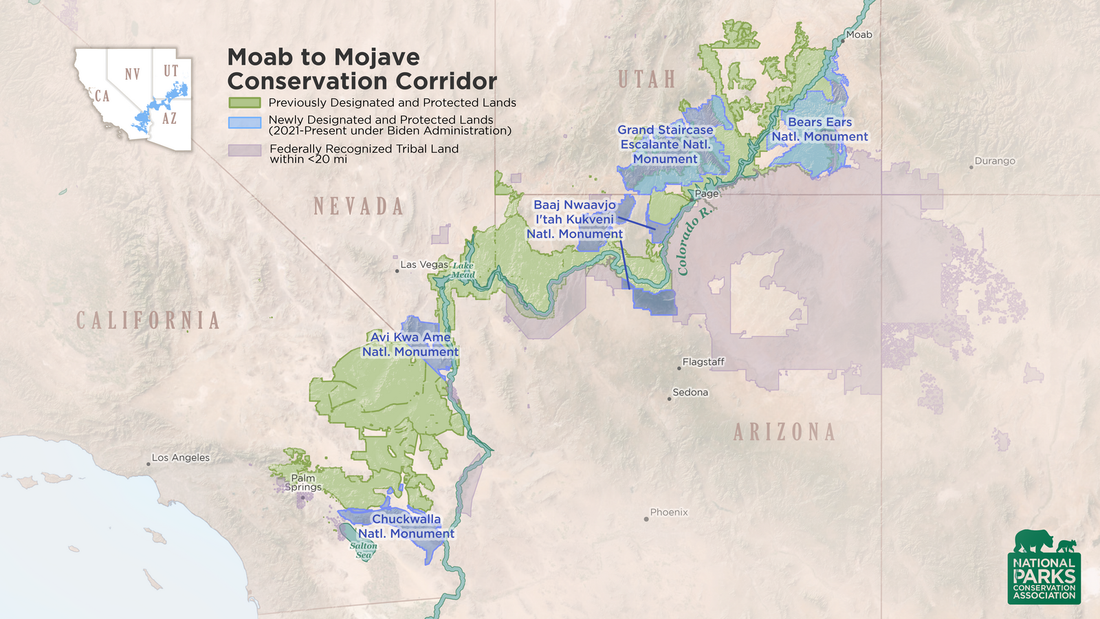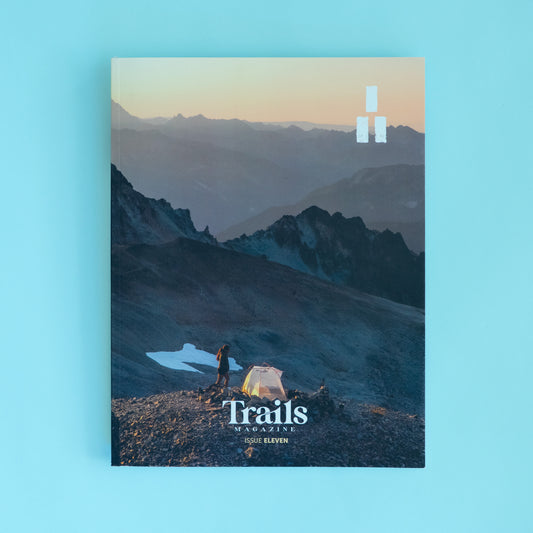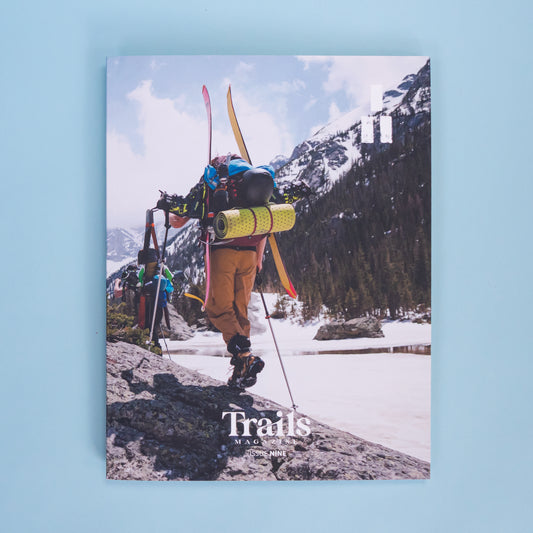
The Moab to Mojave Conservation Corridor
BY CAMERON FENTON
President Biden’s last-minute designation of two final national monuments helped to complete a critical natural corridor.
On January 7th, President Joe Biden announced he was establishing two final national monuments. Sáttítla Highlands National Monument protects volcanic highlands east of Mount Shasta while Chuckwalla National Monument covers a section of the Mojave Desert south of Joshua Tree National Park. The latter filled in the final pieces of the 600-mile-long Moab to Mojave Conservation Corridor.
“This 18-million-acre corridor links the Mojave Desert to the Colorado Plateau, providing safe migration routes for wildlife like the iconic desert bighorn sheep and ensuring clean water flows through the Colorado River and its tributaries,” said Theresa Pierno, president and CEO of the National Parks Conservation Association. “It protects sacred sites central to Tribal nations for countless generations, and welcomes millions of visitors each year, inspiring exploration and bringing lasting economic strength to surrounding communities.”
The Biden Administration began work on the corridor in 2021 when they re-established Bears Ears and Grand Staircase Escalante National Monuments. In 2023 they added Avi Kwa Ame National Monument in Nevada and Baaj Nwaavjo I'tah Kukveni National Monument in Arizona.
But, not everyone is celebrating. Just over a week after the announcement, Republican representatives Celeste Maloy (Utah) and Mark Amodei (Nevada) introduced a bill to amend the Antiquities Act. They hope to limit presidential powers, arguing that “presidents have [abused their] narrow authority to designate millions of acres of land in Utah and across the West without proper congressional oversight”.
In the meantime, the Moab to Mojave corridor could represent a new challenge for long distance desert hikers who could, in theory, now hike protected lands from Canyonlands National Park all the way to the Salton Sea.







